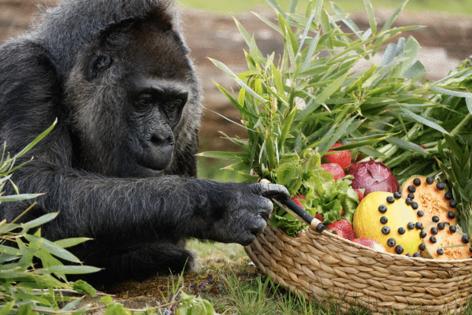Column: The scientific reason humans crave sugar
Published in Variety Menu
We can’t help ourselves. We are, after all, merely apes — or at least close enough relatives to share 98.7% of their DNA.
Apes like sugar. So it is only natural that humans, too, are drawn to sugar.
I recently read a long and funny article in the New York Times by Caity Weaver where she made this very argument.
“How My Trip to Quit Sugar Became a Journey Into Hell” is actually about Weaver’s journey to an Austrian spa that tried to cure her addiction to sweets, but I was most taken by the part about apes and other animals.
“Dogs like sugar. Cats don’t. Bears like sugar. Seals don’t. Every human is born liking it, at least as far as we know,” she writes.
Dogs love ice cream and cakes and pies, of course, and cats don’t like anything. We know that bears love honey. Seals love herring, which is kind of the opposite of honey and cakes and pies.
It turns out that we animals who crave sugar have a very important historical biological need for it: Sugar means calories.
Weaver quotes psychobiologist Gary Beauchamp, former director and president of the Monell Chemical Sense Center, as saying that “the most important thing” in an animal’s life is consuming enough calories to survive.
For nearly all of human evolution, finding enough calories to live was “a really tough job,” Beauchamp says. Sugar was a great way to consume those calories in bulk.
And there was another advantage to it: Foods that taste sweet in nature are generally not poisonous to humans.
Our ancestral apes know this. Weaver quotes Paul Breslin, a nutritional science professor at Rutgers University, as saying that apes get about 80% of their calories from sugary fruit.
They’re “basically sugar eaters,” Breslin says. They gorge on calorie-dense fruit whenever they can. In times of drought, or when these fruits are unavailable, they eat whatever plants they can, trying to survive until the next time fruit is available.
The problem for 20th and 21st century humans is that food science has advanced to the point that, calorically speaking, we no longer have those lean times.
There may be periods of drought, but there are always Doritos. There may be a famine, but there is always fudge.
Calories are readily available in America. You can find calorie-dense food wherever you look, even places that shouldn’t be selling food. Gas stations and gift shops, department stores and drug stores all sell bits of chocolate or crunchy things that are salty and sweet.
They’re unavoidable. And while we are still evolutionarily hard-wired to consume sugar in order to survive, the physical need to do so no longer exists.
There are some exceptions, though. Children, whose young lives are basically spent building their muscles and bones as well as their brains, need far more sugar than adults do.
According to Beauchamp, children’s appetite for sugar drops considerably when they are around 11 to 15 years old, probably in conjunction with the onset of puberty. After that, the craving is much less pronounced, he says.
Oh yeah? Try to tell me that when there is a box of doughnuts nearby, or a chocolate chip cookie, or an ice cream sundae.
I can’t help it. It’s the animal in me.
©2025 STLtoday.com. Distributed by Tribune Content Agency, LLC.










Comments